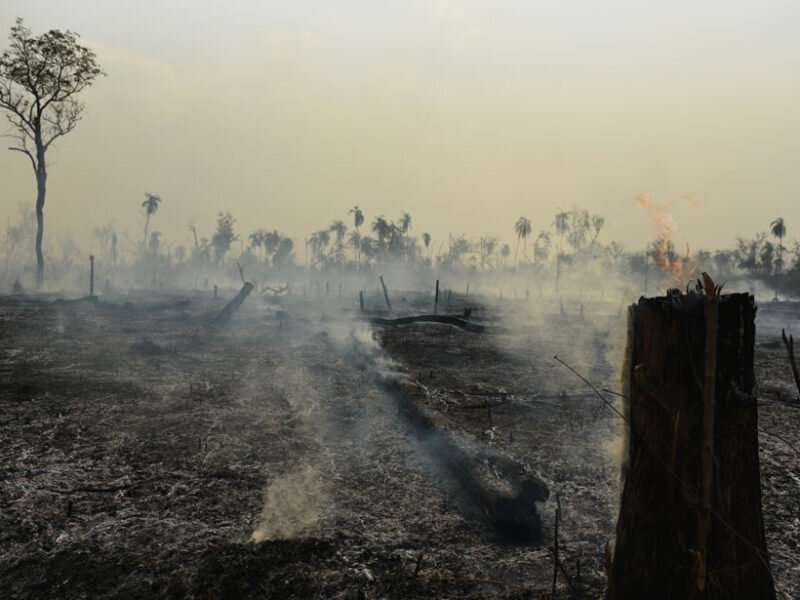A smoking clearing after a forest fire in Brazil. Deforestation and wildfires in the Amazon basin create feedback loops that harm the environment as well as human health. Credit: Felipe Werneck/Ibama, CC BY 2.0
Wildfires are increasingly common, and their smoky emissions can wreak havoc on human health. In South America, fires may cause nearly 17,000 otherwise avoidable deaths each year. Fire frequency in the Amazon basin has been linked to climate—drier conditions result in more fires—but direct human action, such as deforestation, drives up fire frequency as well.
Deforestation can cause wildfires that spread out of control because of humans burning vegetation. Smoke from these fires also interacts with clouds and the Sun to reduce further rainfall, which creates dry, fire-prone conditions. Perhaps most subtly, deforestation breaks up the massive rain forest ecosystem, disrupting the forest's effect on climate and creating a drier environment with greater fire risk.
The number of fires—and the amount of fire-generated air pollution—in the Brazilian Legal Amazon has closely shadowed the deforestation rate over the past 2 decades. In the early 2000s, high deforestation rates led to frequent fires and accompanying air pollution. Over time, the Brazilian government enacted policies to protect large sections of the rain forest, and the deforestation rate dropped. In the past decade or so, however, the rate of deforestation has been slowly climbing again, bringing with it increased fire and health risks.
In a new study, Butt et al. model the year 2019 under different deforestation scenarios to understand the link between these events in the rain forest and public health.
The researchers found that if 2019 had matched the year in the last two decades with the least deforestation, regional air pollution would have been substantially lower that year, resulting in 3,400 fewer premature deaths across South America. If, on the other hand, deforestation rates in 2019 had matched those of the early 2000s, before government regulations brought the rates down, the number of fires would have increased by 130%, and the number of deaths would have more than doubled to 7,900.
These models demonstrate the link between direct human action such as deforestation and environmental hazards and, consequently, public health. They also show how government environmental protections can have a substantial impact on human health.
More information: Edward W. Butt et al, Large Air Quality and Public Health Impacts due to Amazonian Deforestation Fires in 2019, GeoHealth (2021). DOI: 10.1029/2021GH000429
Provided by American Geophysical Union
This story is republished courtesy of Eos, hosted by the American Geophysical Union. Read the original story here.
























